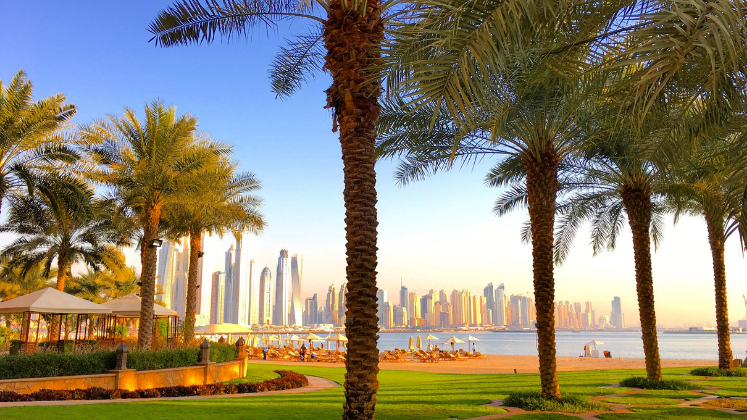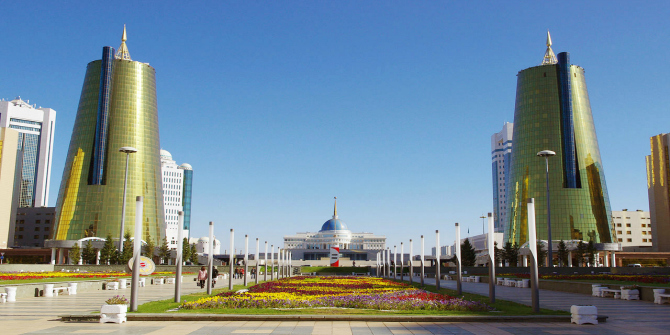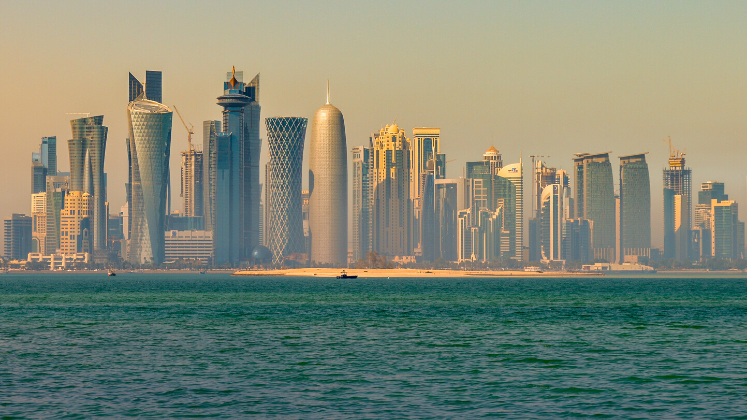 In the last few years, the Persian Gulf city of Dubai has exploded from the Arabian sands onto the world stage. Oil wealth, land rent, and so-called informal economic practices have blanketed the urbanscape with enormous enclaved developments attracting a global elite, while the economy runs on a huge army of migrant workers from the labour-exporting countries of the Indian Ocean and Eurasian regions. In The Superlative City, edited by Ahmed Kanna, contributors analyse some remarkable aspects of Dubai, such as the size and theming of real estate projects and the speed of urbanization. Elaine Housby finds that this will be of interest to anthropologists and architects alike.
In the last few years, the Persian Gulf city of Dubai has exploded from the Arabian sands onto the world stage. Oil wealth, land rent, and so-called informal economic practices have blanketed the urbanscape with enormous enclaved developments attracting a global elite, while the economy runs on a huge army of migrant workers from the labour-exporting countries of the Indian Ocean and Eurasian regions. In The Superlative City, edited by Ahmed Kanna, contributors analyse some remarkable aspects of Dubai, such as the size and theming of real estate projects and the speed of urbanization. Elaine Housby finds that this will be of interest to anthropologists and architects alike.
The Superlative City: Dubai and the Urban Condition in the Early Twenty-First Century. Ahmed Kanna. Harvard University Press. 2013.
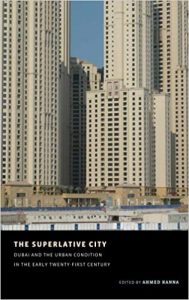
This book is a product of the Aga Khan programme at the Harvard Graduate School of Design, which sponsors research on development and design in the Muslim world. As would be expected given its source, the book is very attractively presented and it is copiously illustrated with photographs that form an essential part of the arguments made. Much writing about Dubai is easy journalistic copy about its perceived excesses. While the title ‘the superlative city’ is a reference to its trademark search to have the highest or largest or most luxurious of everything, this work is a serious attempt to explore what we can learn from Dubai. It brings together authors from a variety of disciplines including architecture, design, urban planning, and anthropology, and is written in a clear and accessible style. It will interest the general reader as well as specialists in the disciplines represented.
Until the formation of the United Arab Emirates in 1971 the region was known as the Trucial States, because of the agreements the British had made with the local rulers. Ahmed Kanna explains in his introduction that the supremacy of the present ruling families was not inevitable and that to talk as if it were is to accept their own hegemonic historical narrative. The British were responsible for elevating them to positions of absolute power. In his own chapter Kanna argues that the classic modernist vision of a city is essentially an aerial or ‘god’s eye’ view, and that this can also be interpreted as the view of an absolute ruler. Dubai thus represents a powerful synthesis of modernism and authoritarianism.
A variety of views are expressed on the way the development of Dubai appears to have relied on a ‘copy and paste’ of motifs from global urbanism. The chapter by Virginie Picon-Lefebvre on the tradition of seaside resorts in Europe and how Dubai has continued it is particularly interesting. The opening chapter by Stephen Ramos and Peter G. Rowe is unusual in stressing the essential rationality of the city’s development. Boris Brorman Jensen on the other hand emphasises its practice of ‘citation and amplification’ and the apparent randomness of the way the ‘squares on the game board’ are filled.
Most authors agree that the promotion of Dubai has been dominated by the visual image. Such key developments as the themed artificial islands were promoted in the form of computer generated images long before construction ever started. Once the investment funds have been secured developments go ahead with remarkable speed. Frank Gehry, one of the many ‘starchitects’ recruited for the city, complained of being expected to produce a design for a museum in only four months. Kevin Mitchell comments in his paper that being allowed as long as four months is a sign of exceptional negotiating power.
The emphasis on individual prestige developments has been at the expense of an overall plan for the city and of supporting infrastructure. This has resulted in a lack of basic services to some new developments and increasingly intolerable traffic congestion. Such problems are beginning to detract from the luxurious living which is at the core of the Dubai brand and thus threaten to make the entire project self-defeating.
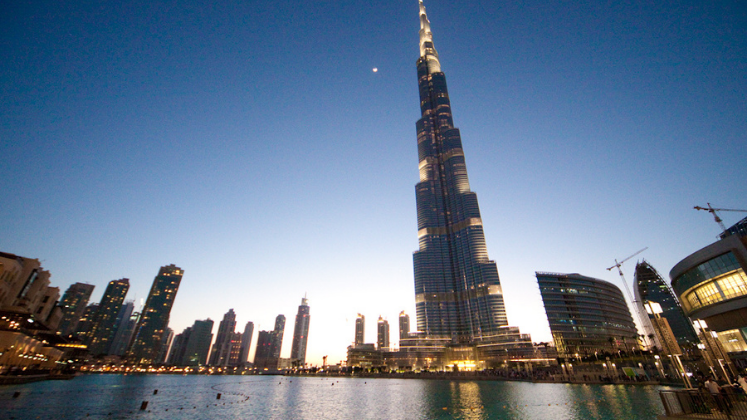
Image Credit: ‘El Burj Khalifa’ by chusico licensed under CC BY NC SA 3.0
The people who actually build all this are Asian migrant workers who live and work in desperate conditions with no right to join a union and no ability to enforce even such basic entitlements as being paid their wages on time. They are now having some success in drawing attention to their situation but can do little in the face of the driving imperative to reduce building costs. Their best hope may be that dissatisfaction with the defective buildings that often result from the reliance on poorly trained labour is also beginning to damage the Dubai brand.
Several authors address the topic of how residents use space in creative ways that do not defer to the master plan. Ahmed Kanna describes the lively street life of the neglected interstitial areas where migrant workers live. Virginie Picon-Lefebvre finds a genuine shared public space on some of the beaches. Amale Andraos and Dan Wood make a very interesting point about the way the international trend to increased privatisation of urban space interacts with Muslim codes of behaviour. In contrast to western critics to whom it represents a loss of freedom, UAE women feel that it has increased their freedom. Female Emirati nationals relish their ability to roam unaccompanied and sometimes uncovered around the malls, areas construed as private, in a way they could not do in a traditional public street.
Whatever theoretical issues they may disagree about, all the authors in this volume conclude that the environmental consequences of the Dubai project are grave. Gareth Doherty explains that the golf course, the garden and the park are symbols of high status in Euro-American urban design and so in Dubai they are faithfully reproduced. In a desert region such greenery is an even more convincing proof of wealth, but it is unsustainable. Water consumption per capita in the UAE is among the highest in the world and since the groundwater aquifers have been recklessly depleted it now depends on energy intensive desalination.
According to Kevin Mitchell, the UAE’s carbon emissions are also the highest in the world, and about three-quarters of energy consumption is due to the dependence on air-conditioning buildings designed with no regard to passive means of temperature regulation. The traditional vernacular architecture of the region featured extensive use of ‘wind towers’ which encouraged the circulation of cooling breezes. In modern Dubai these towers are ubiquitous but have been reduced to non-functional decorative features, a mere visual code to distinguish this particular global city from all the others.
Andraos and Wood use a striking phrase: ‘the negated desert’. The promotional rhetoric of Dubai talks of the city rising from nothing, an image which positions the desert as a mere absence. These writers argue that the desert is not an absence, it is a very powerful presence that inexorably makes itself felt. If those who run Dubai do not begin to acknowledge this, the desert may yet have the last word.
Note: This review gives the views of the author, and not the position of the LSE Review of Books blog, or of the London School of Economics and Political Science.



